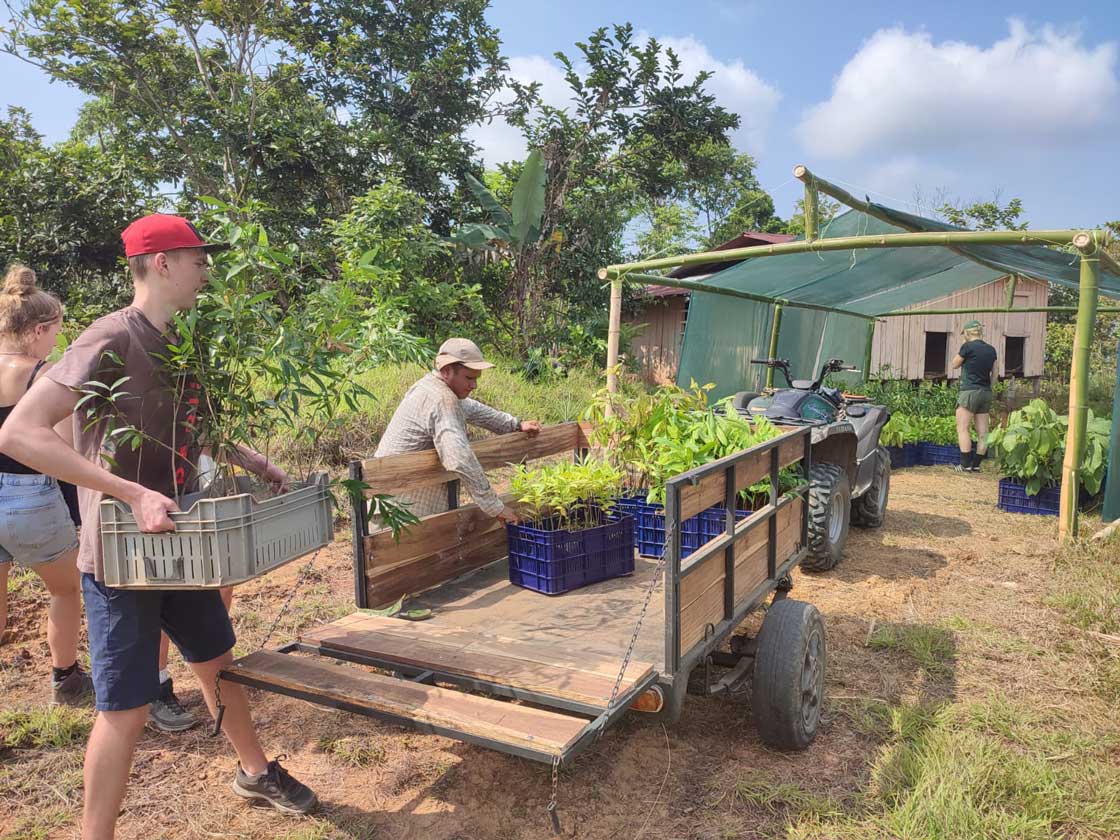Why reforest?
Adopt Rainforest’s mission is to protect 2,000 hectares of rainforest. This 2000-hectare area serves as an important buffer to the nearby Barbilla National Park and the Cabécar Indigenous Reserve. It is important that the reserve consist of a continuous stretch of forest so that animals can move freely throughout the forest area. Many animals avoid open areas and meadows when moving.
When we expand the reserve, it is important that the new parcel is adjacent to the existing reserve. The foundation always prefers to select a new parcel to be purchased that already consists of rainforest. However, Adopt Rainforest cannot escape the fact that from time to time it must also purchase a plot where part of the plot has been deforested in the past. So it may be that there is a strip of grassland between the current reserve and a new piece of rainforest to be purchased. To ensure that the reserve still remains a continuous forest, the foundation is planting a mix of tree species there. This will create a young forest within a period of 5 to 10 years where animals dare to cross again.
